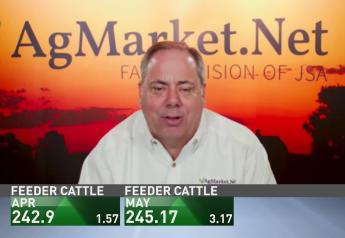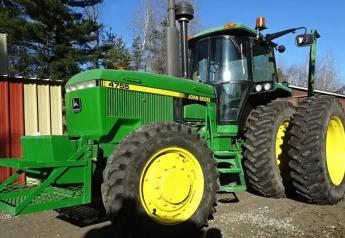Chip Flory: The Case for High Soybean Prices

Late-October rains over Brazil’s ag areas sealed expectations of a big soybean crop for the 2022/23 marketing year. Expectations are Brazil will produce 150 million to 155 million metric tons (MMT), which is 5.5 billion to 5.7 billion bushels of soybeans.
THE BIG THREE
While Brazil’s soybean crop is far from harvest, the trade will expect a big crop, since it was planted into good conditions.
Dry weather in Argentina in the early planting period caused many growers to park their corn planter rather than risking inputs.
However, October rains helped soybean planting. Corn can still be planted in Argentina, but odds are soybean acres expanded with the late-October moisture.
In October, USDA estimated Argentine soybeans at 51 MMT (about 1.9 billion bushels), but a bump in acres could push expectations higher if rains are timely during the growing season.
U.S. soybean yield was trimmed again in the October USDA report with the crop estimated at 4.31 billion bushels, down around 65 million bushels from September.
Combined, the three countries represent 82% of global production (320 MMT) and 90% of global soybean exports (152 MMT).
SET THE TREND
This combination of harvest in North America and planting in South America makes for unpredictable soybean market. Trends can accelerate, end or change. October sets the stage for postharvest U.S. trade, which can be complicated by a Brazilian production hiccup.
Export expectations for the 2022/23 U.S. soybean crop started at 2.2 billion bushels in the May World Ag Supply and Demand Estimates (WASDE) and ratcheted down to 2.05 billion bushels in the October update.
Chinese demand for 2022/23 soybean shipments came early and often but slowed during the U.S. growing season. Sales to China showed signs of life again in October as USDA crop estimates confirmed a sub-trendline U.S. soybean crop.
In May, the U.S. stocks-to-use ratio for 2022/23 was 6.8%. In October, even with a 178-million-bushel drop in use, the ratio fell to 4.5%.
A shrinking U.S. supply, a falling stocks-to-use ratio and the uncertainty of a third-consecutive La Niña South American growing season combined to keep soybean prices elevated through harvest.
If soybean importers become comfortable with South American prospects, they will stretch supplies to outlast high U.S. soybean prices until cheaper Brazilian supplies are ready. But if La Niña brings the threat of a production hiccup to Brazil, importers will be forced to cover needs.
A PRICE FLOOR
Analysts on “AgriTalk” favor a price floor for a soybean risk-management strategy and a put option with weak basis. For strong basis, they favor selling cash or buying a call option strategy.







